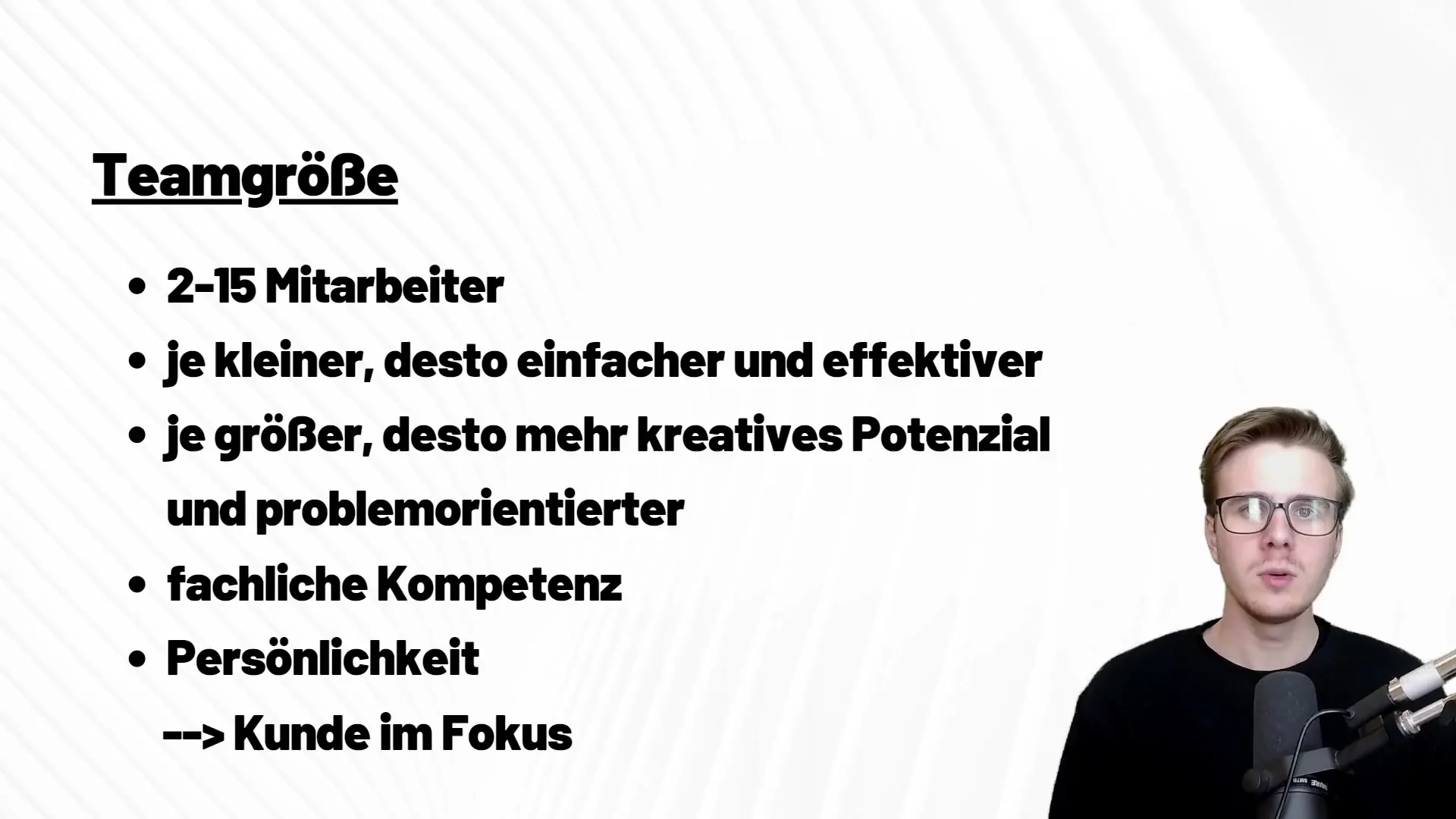For the success of a project, the project team is crucial. The right team composition can determine whether the goals are effectively achieved or if the project may fail. You should be aware of the factors that play a role in selecting and organizing a project team. This guide will show you how to successfully assemble your project team and what elements you need to consider.
Key Insights
- A project team should consist of 2 to 15 members, with smaller teams usually being more effective.
- Professional competence and teamwork are crucial for selecting team members.
- The focus should always be on the goal and the needs of the customer.
Step-by-Step Guide to Team Building in Project Management
Step 1: Determining Team Size
Before you start assembling your team, it is important to determine the appropriate team size. Ideally, a project team should consist of 2 to 15 members. In theory, there is no fixed maximum, but in practice, teams with more than 15 members are often difficult to manage.

The smaller the team, the easier it is to promote communication and keep track of things. Smaller teams are more flexible and can make decisions more quickly, which is particularly advantageous in critical project phases.

Step 2: Pros and Cons of Small and Large Teams
You should weigh the pros and cons of team size. Smaller teams offer better manageability and quicker decision-making processes. Communication within a small team is more direct, making project work more efficient.

A major advantage of larger teams, however, is that they offer a greater variety of ideas and opinions. You have the advantage of tapping into many creative minds, which can often lead to more innovative solutions. However, aligning towards a common goal can be more challenging as more members are involved.
Step 3: Selecting the Right Members
The selection of team members is the next crucial step. You must ensure that each team member has the necessary professional competence and fits well within the team. Make sure that the selected individuals are not only professionally skilled but also bring team-oriented qualities.
It is not advisable to bring someone into the team who, while having excellent technical knowledge, has difficulties with teamwork. Such a person could be counterproductive in a team environment. Consider whether the person would be better off working alone or providing external expertise.
Step 4: Focus on the Customer and Project Goal
The focus in a project team should always be on the customer and their needs. Ensure that all team members understand that the project is not about personal preferences but about fulfilling the customer's requirements.

Employee satisfaction is important to create a positive work environment, but it should always be seen in the light of project success and customer satisfaction. Effective project management considers this balance and ensures that the customer's needs are always at the forefront.
Step 5: Continuous Review and Adaptation
Once the team is assembled, you should conduct regular reviews and adaptations. Pay attention to whether the team dynamics are developing positively or negatively and if all members are actively involved in the project. Adjustments should be made as needed to optimize team performance.
Summary
To assemble an effective project team, you must carefully consider the team size, the members, and their skills. Customer orientation and continuous review of team dynamics are essential for project success.
Frequently Asked Questions
What is the ideal size of a project team?A project team should consist of 2 to 15 members, with smaller teams usually being more effective.
Why are smaller teams often more effective?Smaller teams are easier to manage and can make decisions more quickly, which increases efficiency.
What should be considered when selecting team members?Professional competence and teamwork are crucial. Team members should be able to work well together.
How important is the focus on the customer?Focus on the customer and their needs is absolutely crucial to ensure that the project goals are achieved.
How can I improve team dynamics?Regular reviews of team performance and, if necessary, adjustments to the team structure can improve dynamics.


